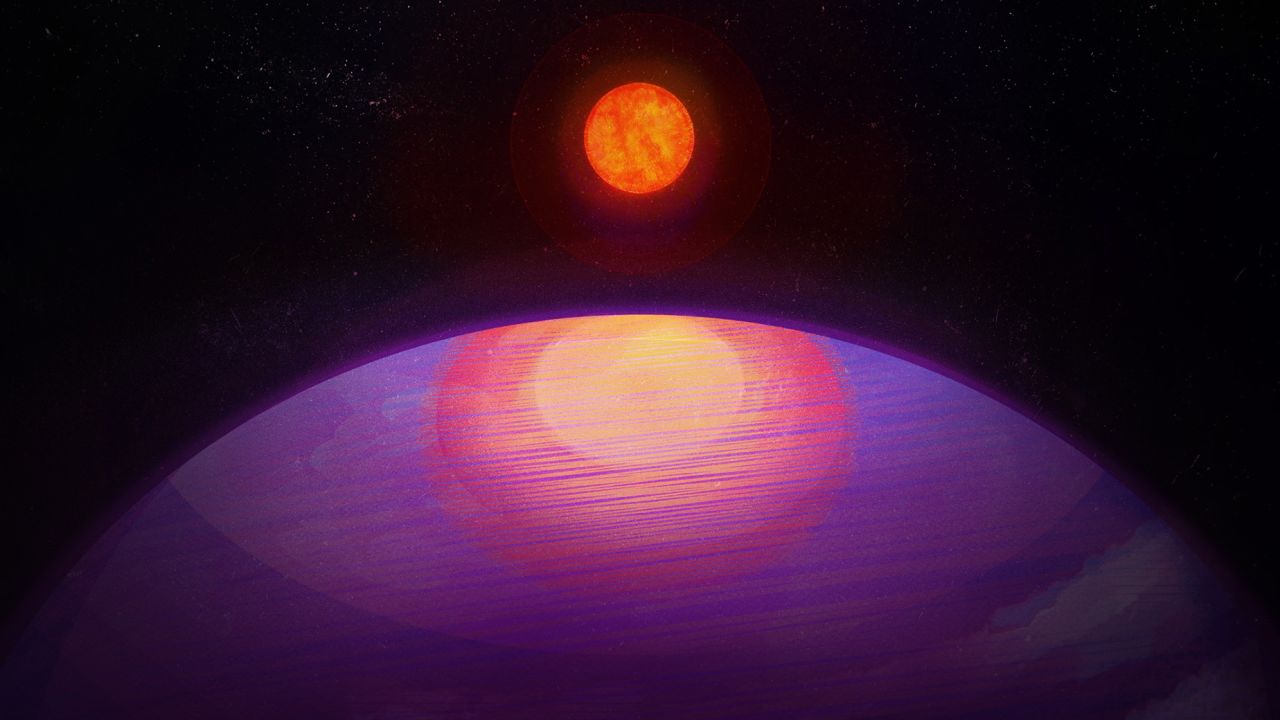(CNN) — Astronomers are questioning theories about planetary formation after discovering an exoplanet that technically shouldn’t exist.
The planet, about the mass of Neptune and more than 13 times more massive than Earth, was discovered orbiting an ultra-cool M dwarf star called LHS 3154, which is nine times less massive than our Sun. A cooler star.
According to a new study published Thursday in the journal SciencesThe planet, called LHS 3154b, orbits the star and completes one orbit every 3.7 Earth days, making it the highest-mass planet known to orbit one of the coldest and lowest-mass stars in the world. This is a radical change in the way scientists understand the formation of planetary systems.
“This discovery highlights how little we know about the universe,” said study co-author Suvrath Mahadevan, a professor of astronomy and astrophysics at Penn State. “We did not expect such a heavy planet to exist around a low-mass star.”
Stars form from large clouds of gas and dust, and the remaining material forms a disk around the star where planets are later born. The amount of material in the disks surrounding stars determines the mass of the planets that form around them. The material of the disk depends largely on the mass of the star.
For example, small M dwarf stars are the most common in the entire Milky Way, and are often orbited by small, rocky planets, rather than giant gas planets.
“The planet-forming disk around the low-mass star LHS 3154 is not expected to have enough solid mass to form this planet,” Mahadevan explains. “But it exists, so we now have to reconsider our understanding of how planets and stars form.”
Image source: Penn State Image caption This chart compares the size of the Sun and Earth to the smaller, cooler star LHS 3154 and the planet it orbits, LHS 3154b.
Living area
The planet orbits a star located about 51 light-years from the Sun, and was discovered thanks to the Habitable Zone Planet Finder, or HPF, mounted on the Hobby-Eberly Telescope at the McDonald Observatory in Texas.
A team of scientists led by Mahadevan built the HPF, designed to detect planets orbiting within the habitable zone of young, cool stars. The habitable zone is the appropriate distance from a star to a planet hot enough to support liquid water on its surface and possibly life.
The lower surface temperature of young stars means planets can orbit much closer and keep fragile elements like water on their surfaces. As planets orbit their stars, the gravitational force between the two objects creates a noticeable wobble that HPF can detect in infrared light.
“Think of it like a star is a burning fire,” Mahadevan explains. “The cooler the fire gets, the closer you have to it to stay warm.” “The same goes for planets. If a star is cooler, the planet must be closer to that star if it wants to be hot enough to contain liquid water. If a planet has an orbit close enough to its ultracool star, we can and can detect it by Seeing a very slight change in the color of the spectrum or light of a star when it is pulled by an orbiting planet.”
Planetary puzzle
Based on modeling and analysis, the research team believes the planet has a heavy core that would require more solid material in the planet-forming disk than would be possible around the star, according to study co-author Megan Delamere, a student at UCLA. He graduated in astronomy at Penn State.
The researchers estimate that the amount of dust in the disk must be at least ten times greater than that normally found in disks surrounding low-mass stars.
“Our current theories of planetary formation have difficulty explaining what we see,” Delamere says in a statement. “Based on current survey work using HPF and other instruments, an object like the one we discovered is probably extremely rare, so its discovery was really exciting.”
Some massive planets have been found orbiting low-mass stars, such as planet GJ 3512 b discovered in 2019, but their orbital periods are much longer, and the planets do not orbit their stars as closely.
“What we discovered provides an extreme test case for all existing planet formation theories,” Mahadevan said. “This is exactly what we built the HPF to do, to discover how the most common stars in our galaxy form planets and to find those planets.”

“Proud web fanatic. Subtly charming twitter geek. Reader. Internet trailblazer. Music buff.”

:quality(85)/cloudfront-us-east-1.images.arcpublishing.com/infobae/TEQF6EONZRFGLLLDIDD4L2O4EE.jpg)

:quality(75)/cloudfront-us-east-1.images.arcpublishing.com/elcomercio/XU32LRAEZFDDPNVHLFU3CKVBYY.jpg)



More Stories
How to create 3D videos with my iPhone, it will be very useful even for your business
NASA discovers an anomaly in the Earth’s magnetic field that could have serious consequences for humans
Can the Earth be divided into two parts?